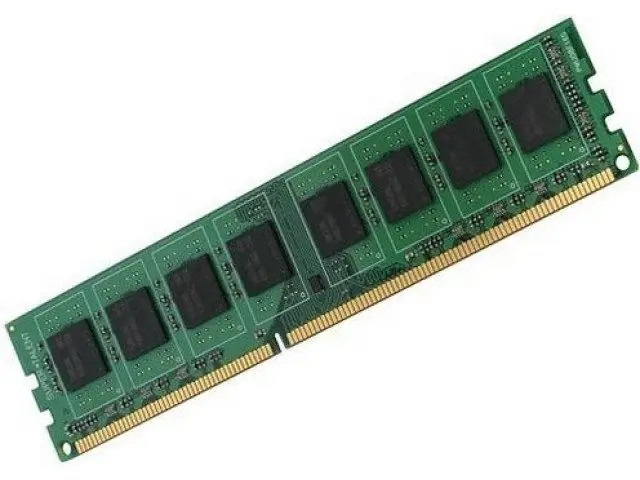The size of the RAM is an important factor for a comfortable work on a PC. The download speed and responsiveness of applications depends on it. If it is not enough, then the computer will slow down when using complex programs, games with modern graphics. Before thinking about additional RAM modules, you need to know its available volume. The operating system usually has standard tools with which you can get this information.

Instructions
Step 1
In Window 7, open the context menu by clicking once with the right mouse button on the "My Computer" icon, and go to the "Properties" section. The "System" dialog will open. In the window section of the same name, information about the installed memory (RAM) is available. The abbreviation for RAM stands for "Random Access Memory". It is its volume that is the initial component of the system and requires an increase, if necessary.
Step 2
Similarly, this dialog can be accessed through the "Start" button. In the main menu, select "Control Panel", go to the "System and Security" section, then click on the "System" item. The same information as described above will be displayed.
Step 3
Get information about the size of RAM using Help, to do this, open the "Help and Support Center" dialog box by pressing F1, enter the abbreviation "RAM" in the search query line, after which links to information on this topic will be displayed. Read the item "Determining the amount of RAM in your computer", then click on the link "Click here" to open the "System" component.
Step 4
You can display the amount of RAM using the Task Manager. To do this, press Alt + CTRL + DEL at the same time. The "Dispatcher" window opens. Go to the "Performance" section. In the lower part of the window, information about the state of physical and virtual memory is displayed in detail.
Step 5
For advanced users, the way to get information through the console is suitable. In the "Start" menu, find the "Run" text field, into which enter the service word msinfo32 and run the command for execution by clicking the OK button. If this field is not immediately displayed in the main menu, then find it in the "Programs - Accessories" section.
Step 6
After executing the command, the "System Information" console will open, where there is information about the amount of RAM. This information is broken down into a number of items, which detail in detail how much RAM is installed on the PC, how much is the total amount of physical memory, how much of it is available for use. There is also information about virtual memory and the paging file.
Step 7
In different versions of Windows, the indicated menu commands may differ slightly, but there are no fundamental differences. For example, the method using the console is universal and suitable for all OS versions. The same can be said about the option with a call to the task manager.






